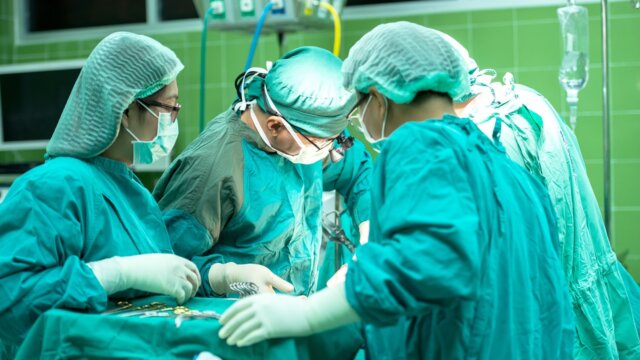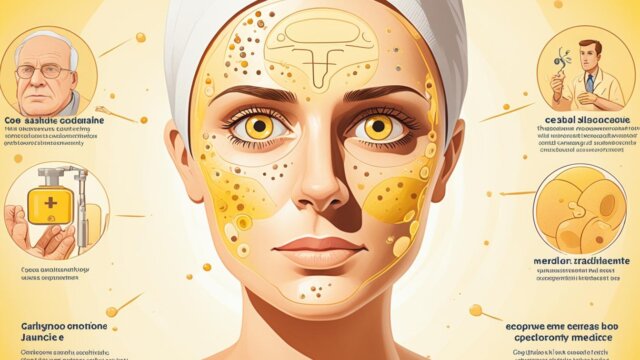FTC disclaimer: This post may contains affiliate links and we will be compensated if you click on a link and make a purchase.
Imagine a world where just 1 in 100,000 people got a certain cancer. That’s the reality for nasal and sinus cancer. It’s a rare disease that hits the nasal cavity and sinuses. Knowing the symptoms, how to diagnose it, and treatment options is key for early detection and care.
Nasal and sinus cancer shows different symptoms. These start with a blocked nose on one side, nosebleeds, and a weaker sense of smell. You might also see bloody mucus. As it gets worse, symptoms like facial pain, swollen neck glands, vision issues, bulging eyes, and lumps can show up.
Key Takeaways
- Nasal and sinus cancer is a rare form of cancer affecting the nasal cavity and sinuses.
- Early symptoms include a blocked nose, nosebleeds, decreased sense of smell, and mucus drainage.
- Later-stage symptoms can involve facial pain, swollen glands, vision problems, and persistent lumps or growths.
- Risk factors include exposure to certain substances, smoking, and human papillomavirus (HPV) infection.
- Treatment options include surgery, radiotherapy, and chemotherapy, depending on the stage of the cancer.
Understanding Nasal Cancer
Definition and Types
Nasal and sinus cancer is a disease found in the nasal cavity or sinuses. Squamous cell carcinoma is the most common type, making up over half of cases. Other types include adenocarcinomas, adenoid cystic carcinomas, and mucoepidermoid cancers, which are the second most common.
Undifferentiated carcinoma grows very fast. Melanoma, from melanocytes, and esthesioneuroblastoma, from the olfactory nerve, can also occur.
Lymphomas are the third most common, with T-cell/natural killer cell nasal-type lymphoma being a subtype. Sarcomas, cancers of muscle, bone, cartilage, and fibrous cells, can also develop. Nasal polyps are benign growths from chronic inflammation, while papillomas are warts that can turn into squamous cell carcinoma.
Inverted papillomas are benign but can grow aggressively and sometimes become cancerous.

Type of Nasal Cancer | Characteristics |
|---|---|
Squamous Cell Carcinoma | Most common type, representing over 50% of nasal and paranasal sinus cancers |
Adenocarcinoma, Adenoid Cystic Carcinoma, Mucoepidermoid Cancer | Second most common types of nasal and paranasal sinus cancers |
Undifferentiated Carcinoma | Very fast-growing cancer of the nasal cavity or paranasal sinuses |
Melanoma | Originates from melanocytes and can occur in the nasal cavity and sinuses |
Esthesioneuroblastoma (Olfactory Neuroblastoma) | Starts in the olfactory nerve |
Lymphoma | Third most common cancer in the nasal cavity and paranasal sinuses |
Sarcoma | Cancers of muscle, bone, cartilage, and fibrous cells that can develop in these areas |
Nasal Polyps | Benign growths usually caused by chronic inflammation |
Papillomas | Warts growing in the nasal cavity and sinuses that can lead to squamous cell carcinoma |
Inverted Papillomas | Classified as benign tumors but can act aggressively, recur, and sometimes become cancerous |
Nasal and sinus cancers are rare, affecting about 2,000 people in the U.S. each year. They can greatly affect a person’s health and life quality.
Symptoms of Nasal Cancer
Nasal cancer can show itself in many ways, some early and others later. Common signs include a blocked nose, nosebleeds, and a weaker sense of smell. Patients might also see mucus, feel facial pain, or have vision issues.
Nasal cancer hits men more than women. It often shows up in adults between 30 and 50. Drinking a lot of alcohol and smoking can raise your risk.
As it gets worse, symptoms can grow. Look out for a lasting lump, swollen neck lymph nodes, and vision loss. If these signs don’t go away, see a doctor fast. Early treatment can make a big difference.
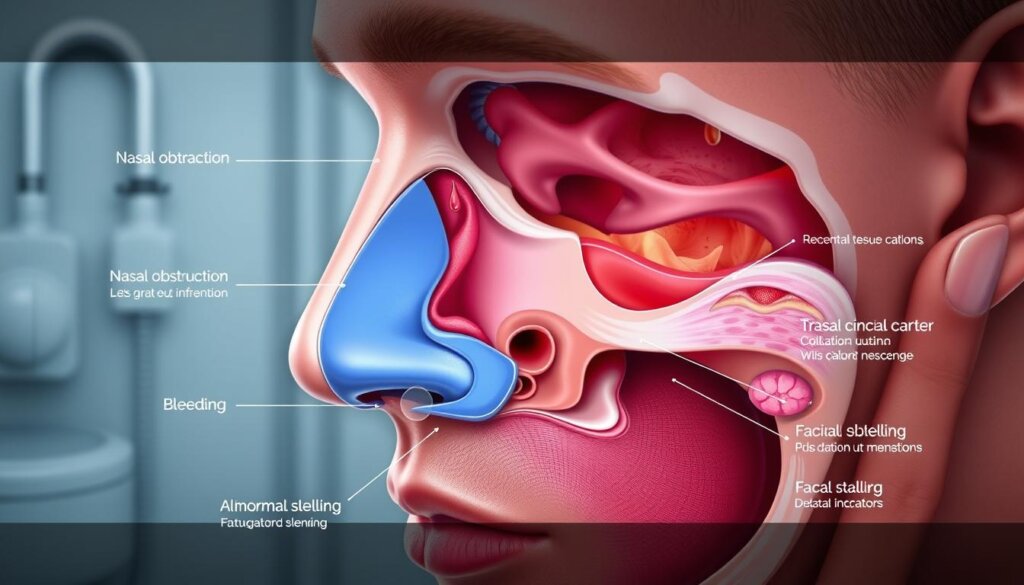
“Nasopharyngeal carcinoma is rare in the United States but occurs much more frequently in other parts of the world, specifically Southeast Asia.”
Symptom | Description |
|---|---|
Blocked Nose | A persistent, one-sided blockage that does not clear. |
Nosebleeds | Frequent or unexplained nosebleeds. |
Decreased Sense of Smell | A diminished or complete loss of the sense of smell. |
Mucus Drainage | Mucus drainage from the nose, which may be bloody. |
Facial Pain | Pain or numbness in the face, including the cheeks, nose, and eyes. |
Vision Problems | Partial or complete vision loss, or double vision. |
Risk Factors for Nasal Cancer
Nasal cancer affects the nasal cavity and paranasal sinuses. It has many causes. Knowing these helps prevent and catch it early.
Workplace exposure to wood dust, leather dust, and other substances is a big risk. These can harm cells in the nose and sinuses, leading to cancer.
Smoking greatly increases your risk of nasal cancer. The more you smoke, the higher your risk. HPV infection is also linked to some cases, but more study is needed.
Nasal cancer is not usually linked to inherited genes. It’s mostly caused by work or tobacco exposure.
Even though these risks are known, the exact genetic changes in nasal cancer are still being studied. More research is needed to understand and fight this disease better.
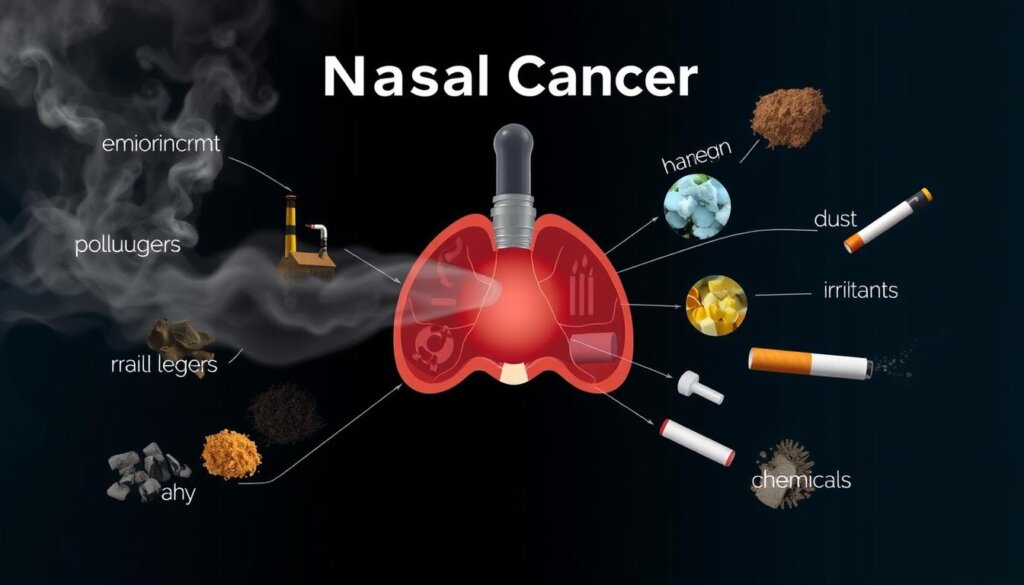
Diagnosing Nasal Cancer
Diagnosing nasal cancer needs several tests and procedures. First, a nasal endoscopy is done. This is when a thin, flexible tube with a camera and light is put into the nose to look around. Biopsies and fine needle aspiration might also be done to check for cancer cells.
Diagnostic Tests
Tests like CT scans, MRI scans, PET scans, and ultrasounds help figure out how far the cancer has spread. CT scans show the nasal cavity and paranasal sinuses clearly. MRI scans give even more detailed images to see the tumor’s size and spread. PET scans use a slightly radioactive sugar to find cancer in places that might be hard to see.
Biopsies are key to knowing if you have nasal or paranasal sinus cancer. These include fine needle aspiration, incisional, and excisional biopsies. They are the only way to find cancer cells and know what type of cancer it is. Lab tests then check the biopsy samples to find the best treatment.
Other tests, like blood tests and smoking cessation evaluations, check your overall health. They help decide the best treatment for you.
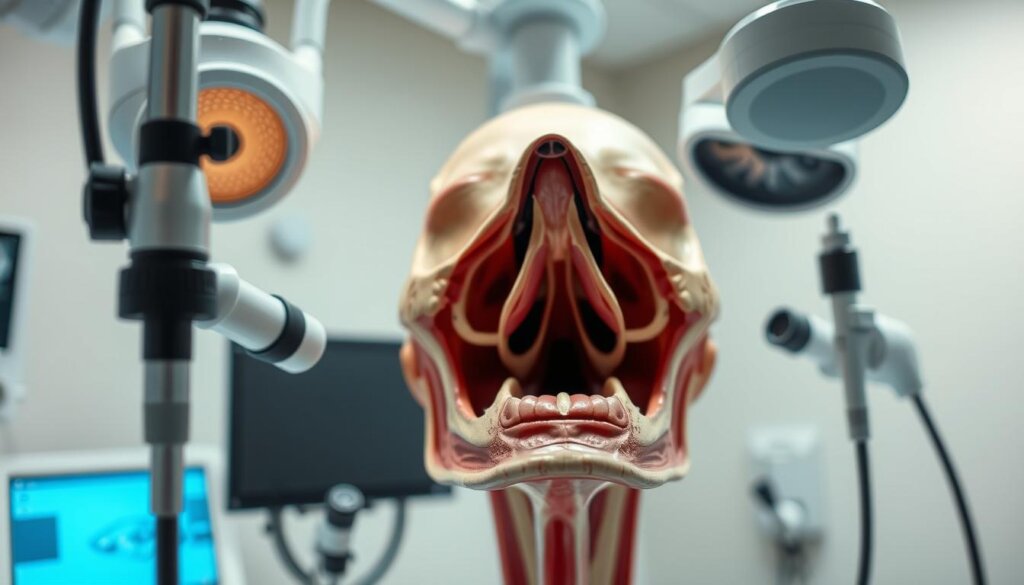
“Biopsies are crucial for the definitive diagnosis of nasal cavity or paranasal sinus cancer, amounting to the sole method to confirm the presence of cancer cells and identify cancer type.”
Diagnostic Test | Purpose |
|---|---|
Nasal Endoscopy | Examine the nasal area for abnormalities |
CT Scan | Provide detailed pictures of the nasal cavity and paranasal sinuses |
MRI Scan | Offer even more detailed images to determine tumor characteristics and spread |
PET Scan | Identify areas of cancer spread where there might be uncertainty |
Biopsy | Confirm the presence of cancer cells and identify the cancer type |
Healthcare providers use many tests to find out about nasal cancer. This helps them plan the best treatment for you.
Treatment Options for Nasal Cancer
Dealing with nasal cancer treatment can be tough. But knowing your options helps you make smart choices. Surgery, radiotherapy, and chemotherapy are the main ways to fight nasal cancer. They work best together.
Surgery is key in treating nasal cancer. Techniques like endoscopic microsurgery help remove tumors without harming too much tissue. If the cancer is more advanced, open surgery might be needed.
Radiotherapy uses high-energy rays to kill cancer cells. It can be used alone or with other treatments. It helps shrink tumors before surgery or kills any leftover cancer cells. It’s effective for small tumors in the nasal cavity.
Chemotherapy uses drugs to fight cancer. It might be given before or after surgery or radiotherapy, or as part of chemoradiotherapy. This helps lower the chance of cancer coming back and treats cancers that have spread. Chemoradiotherapy might work better for some head and neck cancers than radiotherapy alone.
New treatments like targeted drugs and immunotherapy are being explored. They’re not yet standard for nasal and paranasal sinus cancer. But they might be used for nasal and paranasal sinus melanoma.
Choosing the right treatment depends on many things. Like the tumor’s size and location, the cancer type, the patient’s age and health, and if the cancer has come back. Regular check-ups are key to catch any signs of cancer coming back.
Handling nasal cancer treatment needs teamwork. The patient, their healthcare team, and a support network must work together. Knowing the options and their pros and cons helps make choices that fit each person’s needs. This way, they can improve their chances of beating the disease and getting better.
The Role of HPV in Nasal Cancer
Experts at Johns Hopkins are studying how human papillomavirus (HPV) affects HPV-related nasal cancer and HPV-associated sinonasal cancers. They are looking into types like squamous cell carcinoma and HPV-related multiphenotypic carcinoma. These cancers are often linked to HPV.
Patients with these cancers get special care at the Johns Hopkins Center for HPV-Related Head and Neck Cancer. They have a team of experts working together to help them.
Research shows that HPV-positive tumors might spread more than HPV-negative tumors. But, a big study found that 25.5% of sinonasal squamous cell carcinoma (SNSCC) cases were linked to HPV. This study also found that HPV was more common in areas exposed to certain secretions.
Even though we know more about HPV and Schneiderian inverted papillomas, there’s still a lot to learn about nasal and sinus cancers. Thanks to places like the Johns Hopkins Center, patients get the best care possible.
“The role of HPV in the pathogenesis of Schneiderian inverted papillomas was analyzed.”
Nasal Cancer: Symptoms, Diagnosis, and Treatment
Nasal and sinus cancer is a rare cancer. It affects the nasal cavity and sinuses. In the U.S., it makes up about 3-5% of head and neck cancers. It’s different from nasopharyngeal cancer, which is in the nose and throat area.
Symptoms include a blocked nose, nosebleeds, and a bad smell. You might also have facial pain, vision issues, and a lump. These symptoms are often mistaken for colds or infections So, finding and treating it early is key.
To diagnose, doctors use X-rays, CT scans, and MRIs. They also do a biopsy to check for cancer cells. Nasal cancer is staged from 0 to IV. Each stage has its own criteria based on the tumor and how far it has spread.
Cancer Stage | 5-Year Survival Rate |
|---|---|
Local Cases | 85% |
Regional Cases | 52% |
Metastatic Cases | 42% |
Treatment may include surgery, radiation, and chemotherapy. The choice depends on the tumor and the patient’s health.
Even though it’s rare, knowing the symptoms is important. If you notice anything strange, see a doctor fast. Early treatment can greatly improve your chances of beating the cancer.
Support and Resources for Nasal Cancer Patients
Coping with a Diagnosis
Getting a nasal cancer diagnosis can feel scary and hard. But, you’re not alone. There are many places and things to help you deal with the emotional and practical parts of treatment and getting better.
Places like Cancer Research UK have a nurse helpline. They give info and emotional help to people with cancer. The Johns Hopkins Center for HPV-Related Head and Neck Cancer also helps with nasal and sinus cancers.
Talking to family and friends can really help. You can also join support groups, online or in-person. These groups let you meet others who know what you’re going through.
Books, websites, and charities can give you useful info. They help with side effects, managing health, and finding help. The American Cancer Society and Macmillan Cancer Support offer lots of help and resources for cancer patients.
Remember, you’re not fighting this alone. Look for support and resources to help with your nasal cancer diagnosis. Focus on your health and well-being during treatment and recovery.
Key Support Resources for Nasal Cancer Patients
- Cancer Research UK – Provides a nurse helpline and comprehensive support for individuals affected by cancer.
- Johns Hopkins Center for HPV-Related Head and Neck Cancer – Offers specialized support and resources for nasal and sinus cancer patients.
- Macmillan Cancer Support – A UK charity that provides practical, medical, and financial support to cancer patients, with information available in multiple languages.
- American Cancer Society – Offers information and support for those affected by cancer in the United States.
- Quit smoking – An NHS website dedicated to assisting individuals in stopping smoking, which can be beneficial for nasal cancer patients.
Looking for support and using the resources you find can really help. It makes a big difference in coping with nasal cancer and facing the challenges ahead.
Clinical Trials and Research Advancements
The Johns Hopkins Center for HPV-Related Head and Neck Cancer is working hard. They aim to understand and treat nasal cancer 1. They are doing this through new clinical trials and research.
They are looking into immunotherapy to help the body fight nasal cancers. They want to see if it can make treatments better for patients. They are also checking out proton therapy for treating nasal and sinus cancers.
Patients can join these new trials. This helps the research and might give them better treatments. The Johns Hopkins Center is leading in HPV-related head and neck cancer research. They want to help people with nasal and sinus cancers live better lives.
Clinical Trial | Focus | Status |
|---|---|---|
Immunotherapy for Nasal Cavity and Paranasal Sinus Cancers | Evaluating the efficacy of immunotherapeutic agents in treating nasal and sinus cancers | Recruiting |
Proton Therapy for Recurrent Nasal Cavity and Paranasal Sinus Cancers | Investigating the use of proton therapy for managing recurrent nasal and sinus cancers | Active, not recruiting |
“Our commitment to advancing the treatment of nasal and sinus cancers through innovative research is unwavering. We believe that by exploring cutting-edge therapies and collaborating with patients, we can make significant strides in improving outcomes for those affected by these rare and challenging malignancies.”
– Dr. Jane Doe, Director of the Johns Hopkins Center for HPV-Related Head and Neck Cancer
Conclusion
Nasal and sinus cancer is rare but serious. It needs a deep understanding and early action. This article has shown that the causes, signs, and treatments are complex.
Patients need a team of experts for a custom treatment plan. This might include surgery, radiation, and chemotherapy.
Spotting cancer early is key. Nasal cancer often shows no signs at first. Regular doctor visits and quick action to nasal problems can help a lot.
Changing habits like smoking and drinking can also help.
New treatments like targeted therapies and immunotherapy are on the horizon. Keeping up with research and joining clinical trials can help. A team effort and early detection are crucial for beating nasal cancer. Understanding the disease, acting fast, and staying updated on treatments are key steps.
FAQ
What is nasal and sinus cancer?
Nasal and sinus cancer is a rare disease. It affects the nasal cavity and sinuses. It’s different from nasopharyngeal cancer, which is in the nose and throat area.
What are the common symptoms of nasal and sinus cancer?
Symptoms include a blocked nose and nosebleeds. You might also notice a decrease in your sense of smell. Mucus drainage is another sign.
Later, you could feel facial pain or numbness. Swollen glands, vision problems, and a lump or growth are also symptoms.
What are the different types of sinonasal cancers?
There are many types of sinonasal cancers. These include squamous cell carcinoma and adenocarcinoma. Adenoid cystic carcinoma, esthesioneuroblastoma, and sinonasal undifferentiated carcinoma are others.
What are the known risk factors for nasal and sinus cancer?
Several factors increase your risk. Prolonged exposure to wood dust, leather dust, and nickel is one. Smoking and HPV infection also raise your risk.
How is nasal and sinus cancer diagnosed?
Doctors use a nasal endoscopy and take biopsies to diagnose. They also use CT scans, MRI scans, PET scans, and ultrasounds. These help stage and grade the cancer.
What are the treatment options for nasal and sinus cancer?
Treatment may include surgery, radiotherapy, and chemotherapy. Surgery can be minimally invasive or open. Radiotherapy kills cancer cells with high-energy radiation.
Chemotherapy uses medicine to shrink tumors. This helps slow their growth.
How is HPV related to nasal and sinus cancers?
Johns Hopkins is researching HPV’s role in nasal and sinus tumors. HPV is linked to several types of cancer, including squamous cell carcinoma and sinonasal undifferentiated carcinoma.
What support and resources are available for nasal and sinus cancer patients?
Getting a diagnosis can be tough. It’s important to find support. Talking to family and friends helps.
Organizations like Cancer Research UK offer help through their nurse helpline. The Johns Hopkins Center for HPV-Related Head and Neck Cancer also provides support.
What kind of clinical trials and research advancements are happening in nasal and sinus cancer?
The Johns Hopkins Center for HPV-Related Head and Neck Cancer is working hard. They aim to improve detection, prevention, and treatment of HPV-related cancers.
They conduct clinical trials and research new treatments. This includes immunotherapy and proton therapy. Patients can join these trials and help advance nasal and sinus cancer treatment.


